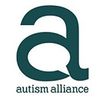Non-Speaking - Jamie and Max, Part 1

Non-Speaking Communication - Jamie and Max's Experience, Part 1
Some autistic people are non-speaking, meaning they don’t use words when communicating. Instead, they may convey their needs and wants using other methods.
These different types of communication can come in many forms, but they are just as valid as speaking. From writing and signing to visual supports and electronic devices, the preferred tool can be unique to the individual and their needs. They might even choose to use a variety of different tools to express themselves.
Jamie is a parent to Max and Riley, two non-speaking boys at Portfield School.
She said: “Non-speaking to me means that the boys can’t say any words that can be understood by anyone. They make a lot of noises which maybe make sense to them but nothing that we can attribute to words at the moment.”
Every individual is different and communicates in their own way – and the same applies to those who are non-speaking like Max and Riley.
Although Max grew up without any speech, he can now say ‘dad’ and ‘up’ after working with his Speech and Language Therapists and Teachers.
Speech and Language Therapists work in partnership with individuals to help develop the skills they need to inform others of their needs, wants, and wishes. They can assist learning speech and introduce Augmentative and Alternative Communication (AAC) techniques to replace or support speech, such as symbol boards.
In a society where speaking takes priority, it can be frustrating when different styles of expression aren’t acknowledged or welcomed.
She continued: “People tend to think if you’re non-speaking, you’re unintelligent and sort of talk in front of you like you’re not there.”
Just because someone is non-speaking doesn’t mean they don’t understand speech or have their own thoughts and feelings. Like anyone else, they are capable of leading happy lives, achieving great things and building relationships.
Max’s understanding has improved as he’s gotten older. When people are having conversations in front of him, he seems to understand what’s going on.
“He is extremely bright and he can communicate in two other ways with signing and with his iPad. From someone who was born not having any form of communication, he has now learned two and is working on a third which I think you have to be quite intelligent to do.”
By accommodating and accepting differences in communication, everyone can feel further included in society, make meaningful connections and benefit from more opportunities.
She concluded: “I don’t think if they’ll talk, I think it’s a never say never. I’ve heard stories of people in their thirties and forties who have been non-verbal or non-speaking and start talking. That’s great to us but talking would be the icing on the cake.”






